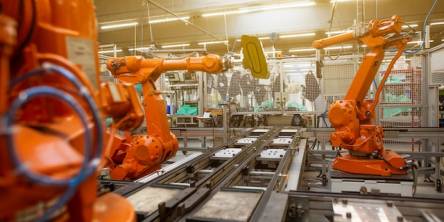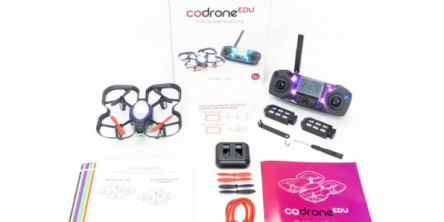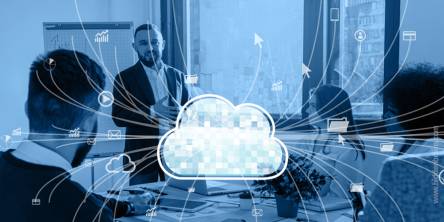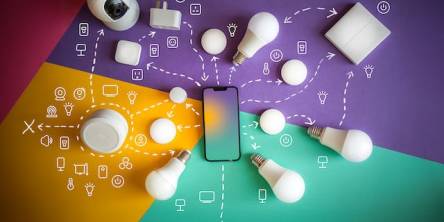IoT and the Role it Plays in Workforce Management

We do not have to tell you just how vital any company’s workforce is — after all, it is the workforce that gets everything done. Think of it as the organization’s spine, i.e., without it, one can not operate. Now that we agree about the role of the workforce let’s move on to its management. Workforce management is an absolute must for any company that wishes to grow its business and, along with it, the profits. And exactly how does workforce management help with that? But if one had to surmise, they would say workforce management enables all that by streamlining run-of-the-mill processes. It is by leveraging modern tools in service of the goals mentioned above. And among the many other novel technologies available in the market, it is the Internet of Things that have demonstrated high levels of potential in this regard.
But before we discuss workforce management and IoT any further, let’s take a moment to understand what the latter really is quick. The Internet of Things is best described as a network of interconnected devices that enables data collection, transfer, analysis, and more. It makes use of a vast number of connected sensors, wireless networks, devices, real-time analytics, and more to execute various tasks and achieve a variety of goals. Even this most basic definition offers plenty of insights about the many, many different ways in which IoT can be leveraged. It is about streamlining workforce management and achieve substantially better results. But to help you understand this duo and its potential better, I am sharing some of their benefits in detail below:
1. Access to data via a central platform: IoT can be leveraged to gather data about not only employees but other tangential aspects, including clients, offerings, and more. It is because they are all consequential to the company’s performance and hence, inter-linked. So, IoT not only enables companies to gather it but also collates and channels it into a unified platform from where it can be utilized in an appropriate manner to assist the endeavors to achieve the business’ goals.
2. Mobile workforce management: This refers to the tools one uses for the management of employees who do not operate from the premises. With IoT in the mix, mobile workforce management can leverage cloud computing, cloud-based communication tools to enable efficient operations even with a remote workforce. So, it can be used to monitor employee performance, check the progress of projects, schedule tasks, send alerts for pending tasks, and so much more. And this is as effective across the entire spectrum of industries, i.e., be it utility workforce management or any other type — the results of this integration are evident and quickly at that.
3. Better visibility: The union of workforce management with IoT also empowers the company with substantially improved levels of visibility since the data isn’t merely collected and dumped into a database. It is also processed to glean insights that help achieve better visibility into the company’s operations. Such levels of visibility can then be leveraged to drive informed decisions aimed at fostering a better rate of growth for the business.
4. Track internal processes: The ability to seamlessly monitor the company’s internal processes is also invaluable and lends many contexts to workforce management and its ability to be efficient. So, say, you can track a given piece of equipment’s performance and start to notice some lags or stats that shouldn’t ideally be there. These insights can then be used to ensure that a relevant technician is assigned. So, that they can take up the task of checking out the equipment and carry out any preventive and corrective measures to ensure it keeps running as intended. It helps companies save much precious time.
Similar Articles
Enterprise cloud adoption is now a strategic goal. As modern businesses migrate to the cloud for scalability, flexibility, and cost-effectiveness, integration with DevOps principles becomes important. DevOps in the context of cloud adoption is more than just a methodology; it has shown to be a game changer, significantly enhancing efficiency, collaboration, and overall development processes.
Digital transformation is leading the way in reshaping the factories of the future. The term smart factories or industry 4.0, enables manufacturers to refine production processes, manage global market competition, and realize significant returns
In the fast-paced world of photography and videography, staying ahead of the curve requires cutting-edge technology and innovative features. One brand that has been making waves in the industry is Insta360, and for good reason. Insta360 cameras have gained popularity for their exceptional capabilities and user-friendly design.
In the ever-evolving landscape of education, fostering an early interest in coding has become crucial. One innovative tool that has taken the realm of coding education to new heights is the CoDrone. Tailored specifically for young learners, CoDrone not only introduces kids to the fascinating world of programming but also brings their coding adventures to life in the sky
In this digital era cloud computing has become an integral part of business operations. It is flexible, scalable and cost-effective, making it a top choice for many organizations. But with the arrival of various kinds of cloud solutions, selecting which one's right for your business can be a bit overwhelming.
In the dynamic realm of the Internet of Things (IoT), establishing a resilient and efficient infrastructure is imperative for the prosperity of any IoT initiative. Whether working on a smart home system, industrial automation, or healthcare solutions, thoughtful evaluation of diverse factors is indispensable
Over evolution in software testing, two prominent testing methodologies have surfaced: Big Data Testing and Traditional Database Testing. Big Data Testing is tailored for handling the extensive amounts, diverse types, and rapid data flow inherent in the big data environment.
In the fast-paced world of supply chain management, it is vital to coordinate logistics operations for businesses aiming to meet customer demands, reduce costs, and stay competitive.
The handling of projects may be characterized as a laborious and complex responsibility. From the formation of employment positions through allocating resources for managing work in progress, significant amounts of business hours and resources are used.









